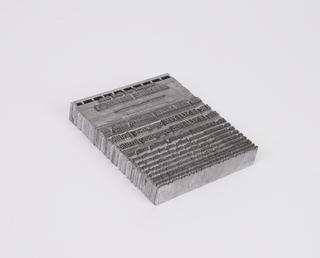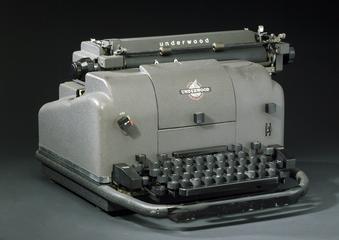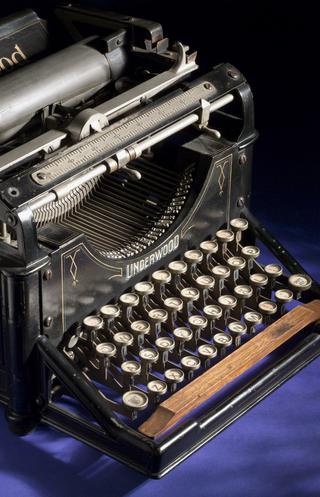
"Mignon" 2 clone typewriter, France, 1918-1924
"Mignon" 2 clone typewriter, made in France and imported into the UK by the Electrical Company Ltd, London, 1918-1924.
More
The principle of the Mignon is very simple. It combines a typesleeve with a complete character set, and an index card with pointer and two (later three) keys. Point the pointer at a letter on the index and strike the key to print a letter on the paper and advance the carriage. With minor practice the operator could reach a typing speed of at least 100 strokes per minute. Both the index card and typesleeve could be replaced to change fonts and use character sets for different languages.
After the First World War, the 1918 Versailles Treaty included a clause which cancelled all German industrial patents and allowed anything based on German patents to be freely copied around the world. This “clone” or copy of the Mignon 2 typewriter was based on a design and related patents originally held by German electrical engineering and manufacturing company Allgemeine Elektricitäts-Gesellschaft AG (AEG). It was made in France, as indicated by the embossed, nickel-plated paper table, and imported into the UK by the Electrical Company Ltd, London.
The Mignon index typewriter is considered the model index typewriter, first appearing on the market in 1905 (Mignon 1) with a later model (Mignon 2) of which this is a clone being made up until 1913. Other models of Mignon index typewriters continued to be made until 1934. The Mignon combined the simplicity of more primitive index machines with the sturdiness of a well-produced office machine and was a practical alternative to the more expensive keyboard typewriters in the early twentieth century.






